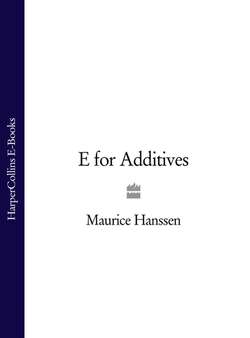Читать книгу E for Additives - Maurice Hanssen - Страница 24
Оглавление3. Golden Eggs and Pink-Fleshed Fish
A happy free-range chicken, able to scratch around for its food and choosing many different pigment-containing and mineralrich items, will usually produce richly golden and strongly shelled eggs. The less fortunate battery hens have to rely upon what is in their feed to give their eggs colour. The most important of these colour-forming substances are, together with other oxygen-containing carotenoids, known by the collective name of xanthophylls (E161).
The xanthophyll content of these fresh feeds is not constant and rapidly degrades during storage periods, so poor colour is a particular problem during the winter months.
Because of the high prices of imported grains compared to those from home, even colour-containing alfafa and maize have been replaced by such cereals as wheat and barley which feed the hens just as well if various fats and soya meals are added, but have no pigments present. A typical laying chicken ration would be as follows:
| Wheat | 600.00 kg |
| Extracted soya | 155.00 |
| Full-fat soya | 50.00 |
| Barley | 77.50 |
| Limestone flour | 80.00 |
| Fish meal | 25.00 |
| Vitamin and trace minerals, calcium and salt | 12.50 |
| Total | 1000.00 kg |
The egg producer studies his market and knows that eggs for table use sell best if the yolks are a nice golden colour, while eggs used for the manufacture of bakery products, pasta and sauces are better yellow.
Egg yolk colours are measured on a scale from pale yellow to deep orange in shades of 1–15. Table eggs are generally at about No. 11 on the scale, although some producers prefer a very deep orange colour for which they demand higher prices. In practice, the feed supplier helps the egg producer choose the desired colour and then adds concentrated red or yellow pigments of synthetic or natural origin to produce the desired effect which is then checked on a regular basis.
It is known that certain free-range egg producers have added naturally occurring pigments to the ration, especially during the cold months, although the legal situation regarding this does not appear to have been established.
Maize-Fed Chickens
In both France and the United States maize-fed or, as the Americans say, corn-fed, chickens with attractive yellow skins are thought to look and taste better than the white birds preferred in Britain, and the colours can be achieved directly from the xanthophylls in the feed. It is possible to cheapen the diet by using a mixture of cereals and supplementing with pigments, or to add pigments to a maize feed to ensure a deep colour.
It is also possible to produce similarly coloured chickens when the feeds are not fresh, and for this purpose lutein (El6lb), which can be extracted from marigolds, is added to the feed.
Trout and Salmon
There is a long history of trout farming in Britain, certainly going back to the medieval monasteries where farmed trout brightened the Friday fast. Today the farming of salmon, trout and other fish is big business, but have you ever wondered about the great increase in the availability of delicious pink-fleshed trout and salmon? The pink flesh would, in natural waters, be from fresh foods such as crustaceans, shrimp, prawn, lobster (astaxanthin) and various algae.
It is too expensive to feed the farm fish the crustaceans of their usual environment, so a red pigment, canthaxanthin (El6lg), or astaxanthin (no E number), is added to the feed to produce pink flesh. El6lg and certain other pigments, including various forms of carotene and vitamin A, are also sold in tablet form so that we can look as if we have been on a Mediterranean holiday and developed a nice, if often rather yellowish, tan. Be warned though that such coloration gives no protection from sunburn and is there, as in the case of the fish, strictly for appearance’s sake. See additional note on page 374.
Other Uses of Pigments
Pigments are commonly found in pet feeds especially for captive birds so that their colourful plumage is maintained. Zoo flamingos are fed with canthaxanthin to ensure the pinkness of their legs, beaks and feathers. Such commonplace pet foods as dog biscuits and meats often appear to contain significant quantities of undeclared colours. It is doubtful whether these are truly appreciated by the animal, but they do attract the owner.
There are widespread abuses of the external colouring of seafood. For example, jumbo prawns and smoked cod’s roe are frequently on sale in the fish shop without any ingredient declaration, but they have quite often unquestionably been dipped in a heavy concentration of red dye.
Smoked fish is another loophole. Fish can be called ‘smoked’ when all that has happened is that they have been dipped in a liquid smoke flavour and then artificially coloured! Indeed, smoked and cured fish which is not packed ready for the consumer, like ham, just has to say ‘added permitted colour’, but if it is pre-packed the full declaration is required.
Consumer choice means the freedom to make an informed choice and although we think that the use of these artificial and natural additives in animal feeds presents no toxic hazard to the consumer, we do believe that we have a right, as is the case with eggs in the United States, to know what pigments have been added. In addition, acceptable and legally controlled levels of daily intake should be established and enforced. If the egg regulations are so changed, it would be a good opportunity to label egg boxes with the date the eggs were laid and not the less useful date of packing.
